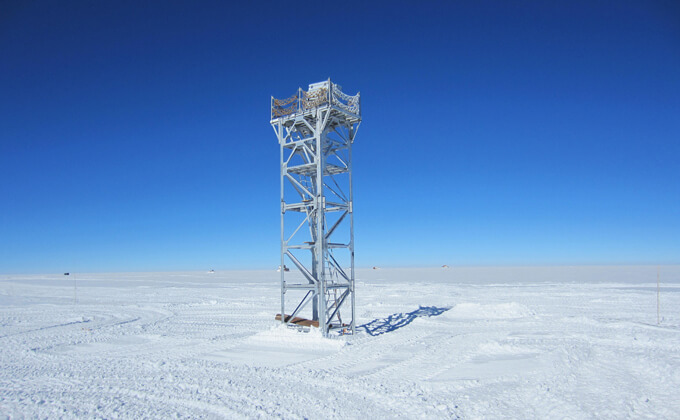
Where can you find the clearest view of the sky? In Antarctica!
 21. 09. 2020
21. 09. 2020

The Antarctic ice dome can offer the clearest view of the night sky in the world. According to researchers, the site in East Antarctica could be an ideal place for an observatory.
An observatory in the heart of Antarctica could have the clearest view of the night sky in the world
If the optical telescope were built on a tower in the middle of the Antarctic Plateau, it would be possible to observe celestial bodies in much better quality than at other observatories. The observatory would achieve sharp vision by being able to observe cosmic bodies above the lowest layer of the atmosphere. It is this that is responsible for most of the undulating air that blurs the images from the telescope.
The thickness of the Earth's boundary layer varies across the planet. Near the equator, it can be hundreds of meters thick, which limits the vision of leading optical telescopes in places such as the Canary Islands and Hawaii. These telescopes usually cannot capture celestial objects smaller than 0,6 to 0,8 angular seconds - the apparent width of a human hair from a distance of about 20 meters.
But in Antarctica, the layer is really thin, says Bin Ma, an astronomer at the Chinese Academy of Sciences in Beijing.
Weather station
Ma and colleagues made the first-ever measurement of the night's defocused atmosphere from the highest point in East Antarctica called Dome A. From April to August 2019, instruments on an 8-meter-high tower at China's Kunlun Research Station watched Earth's atmospheric turbulence distort incoming starlight. A nearby weather station also monitored atmospheric conditions such as temperature and wind speed. Using these observations, the researchers characterized the boundary layer in Dome A and its effect on telescope observations.
The boundary layer was about 14 meters thick on average; as a result, the light sensors at the top of the 8-meter tower were completely free of blurring of the boundary layer in only about a third. But when these instruments were above the layer, the atmospheric interference was so low that the telescope could capture details in the sky at a diameter of 0,31 angular second. The best recorded atmospheric conditions would allow the telescope to see features in just 0,13 arcseconds.
"One tenth of an arcsecond is exceptionally good," says Marc Sarazin, an applied physicist at the European Southern Observatory in Munich.
Meteorological station in Antarctica
Scientists have found similarly excellent visibility above the boundary layer elsewhere on the Antarctic Plateau, known as Dome C. But the boundary layer there is about 30 meters thick, making it difficult to build an observatory above it. An optical telescope planned for construction on a 15-meter tower in Kunlun could take advantage of Dome A's star views above the boundary layer, says Ma. These sharp images of the telescope could help astronomers study a variety of celestial objects, from bodies in the solar system to distant galaxies.
Erich von Däniken: Space Horizons
Erich von Daniken together with several important scientists, they prove that he has been visiting Earth since time immemorial UFO. It has influenced the development of mankind over the ages. How else to explain the findings of functional mechanisms, several thousand years old, which were historically invented much later, the observation UFO in times long past, the phenomena of flying cars or "houses"? You will find the answers not only to these questions clearly in one place, in this admirable book.





 1
1

